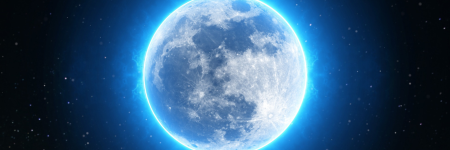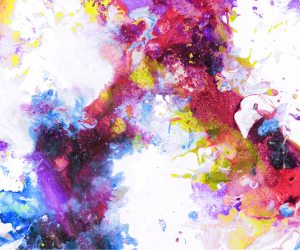Waxing and Waning Gibbous Moon
The first crescent is located between the New Moon and the first quarter. When this period is over, it is the time of the waxing Gibbous Moon. The last crescent is the period between the last quarter and the New Moon. After the Full Moon and until the last quarter, this is when the waning Gibbous Moon is seen.
When is the waxing Gibbous Moon?
The waxing or rising Gibbous Moon occurs 2 to 3 days before the Full Moon. We know that it is ascending because the circle of the Moon is three-quarters formed and cut off on the left side.
What is the influence of an ascending Gibbous Moon?
The influence of the Full Moon or New Moon is well known. The waxing and waning Gibbous Moon also has a significant effect on human beings!
When the Gibbous Moon is rising, everything is still possible. You begin to see the rewards that you will get during the full moon. However, it is also still a time to do positive things, to do better, and to evaluate the feasibility of your projects. A Gibbous Moon is truly a good time to start something or to form a new habit.
When is the Gibbous Moon descending?
The waning or waning Gibbous Moon, and of course the exact opposite of the waxing Gibbous Moon. It occurs two to three days after the Full Moon. A waning Gibbous Moon can be identified by the fact that it is three-quarters illuminated and cut off on the right side. A waning Gibbous Moon usually rises after sunset and sets after sunrise. When it appears, it is sometimes difficult to distinguish it from the full moon, because it is then almost completely illuminated.
What is the influence of a waning Gibbous Moon?
A waning Gibbous Moon is more indicated to put an end to a practice, such as a bad habit, or a toxic relationship... Here, we can take advantage of this moment to return to ourselves, gently, through simple things, like rest, relaxation, meditation. The waning Gibbous Moon is an ideal time to release tension. Then, finally rid of our bad habits, of what was holding us back, we will take advantage of this moment to make new love encounters and find solutions to our professional problems.
Good to know:
The Gibbous Moons do not appear in the lunar calendar because there is no symbol to represent them and because it is an intermediate phase and not a main phase. To observe the waxing and waning gibbous moons, look at the dates of the next Full Moons and look towards the sky 3 days before and 3 days after!











 Aries
Aries  Taurus
Taurus  Gemini
Gemini  Cancer
Cancer  Leo
Leo  Virgo
Virgo  Libra
Libra  Scorpio
Scorpio  Sagittarius
Sagittarius  Capricorn
Capricorn  Aquarius
Aquarius  Pisces
Pisces 








Did you like this article?
Want to know more 🤔 ?
Write directly to the authorSusanTaylor !
Ask Susan a question
Want to share your thoughts? Leave a comment